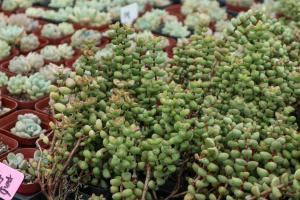Is it Okay to Plant Directly in a Galvanized Pot?
Galvanized metal pots are a popular choice for gardening enthusiasts, thanks to their durability and attractive appearance. While these pots can be a great addition to your outdoor space, some people may wonder if it's okay to plant directly in a galvanized pot. In this article, we'll explore this topic in more detail and provide some insights into the pros and cons of this gardening method.
What is a Galvanized Pot?
A galvanized pot is typically made from steel or iron that has been coated with zinc in order to prevent rust and corrosion. The zinc coating gives the metal a shiny silver appearance that is both attractive and functional. These pots come in a range of sizes and styles, and they are often used for growing plants and flowers.
Pros of Planting Directly in a Galvanized Pot
One of the biggest advantages of planting directly in a galvanized pot is its durability. These pots are designed to last for many years, even in harsh weather conditions. They are also lightweight, making them easy to move around as needed. Additionally, galvanized pots are resistant to pests and fungi, and they are not susceptible to rot like wooden planters.
Another benefit of galvanized pots is that they are generally attractive and can complement a range of garden styles. They also offer a modern and sleek look that many people find appealing.
Cons of Planting Directly in a Galvanized Pot
While there are many benefits of planting directly in a galvanized pot, there are also some potential downsides to consider. One of the biggest concerns is that the zinc coating on the metal can be harmful to some plants. When the zinc is exposed to moisture, it can leach into the soil and harm the roots of certain plants. This can result in stunted growth or even the death of the plant.
Another potential issue is that galvanized pots can get very hot in direct sunlight. This can cause the soil to dry out quickly, which can be detrimental to some plants. Additionally, the metal can expand and contract as the temperature fluctuates, which can cause cracks and other damage over time.
Best Practices for Planting in a Galvanized Pot
If you decide to plant directly in a galvanized pot, there are some best practices that you should follow in order to ensure success. First, consider the type of plants that you want to grow and research whether they are compatible with galvanized pots. Some plants, such as tomatoes and blueberries, are more sensitive to zinc than others.
Secondly, line the pot with an extra layer of plastic or a porous fabric to prevent the zinc from leaching into the soil. This can also help to regulate the temperature and moisture levels in the pot.
Finally, be sure to monitor the soil moisture levels regularly and water your plants as needed. If you notice that the soil is drying out too quickly, consider using a mulch or adding more organic matter to the soil to retain moisture.
In Conclusion
In conclusion, planting directly in a galvanized pot can be a great option for gardening enthusiasts who want a durable and attractive container for their plants. However, it's important to consider the potential risks as well as the best practices for success. If you do your research and take the necessary precautions, you can enjoy beautiful and healthy plants in your galvanized pot for many years to come.

 how many times do yo...
how many times do yo... how many planted tre...
how many planted tre... how many pine trees ...
how many pine trees ... how many pecan trees...
how many pecan trees... how many plants comp...
how many plants comp... how many plants can ...
how many plants can ... how many plants and ...
how many plants and ... how many pepper plan...
how many pepper plan...































